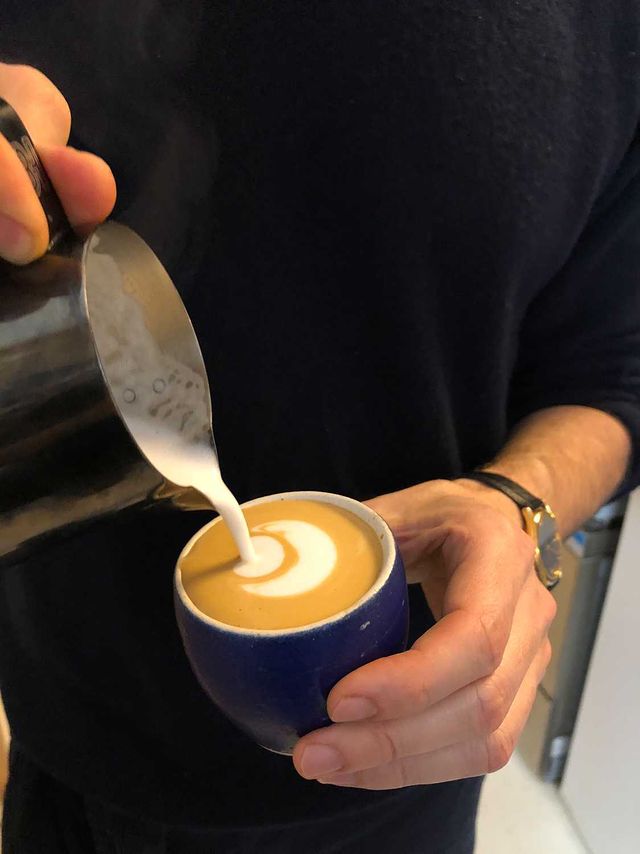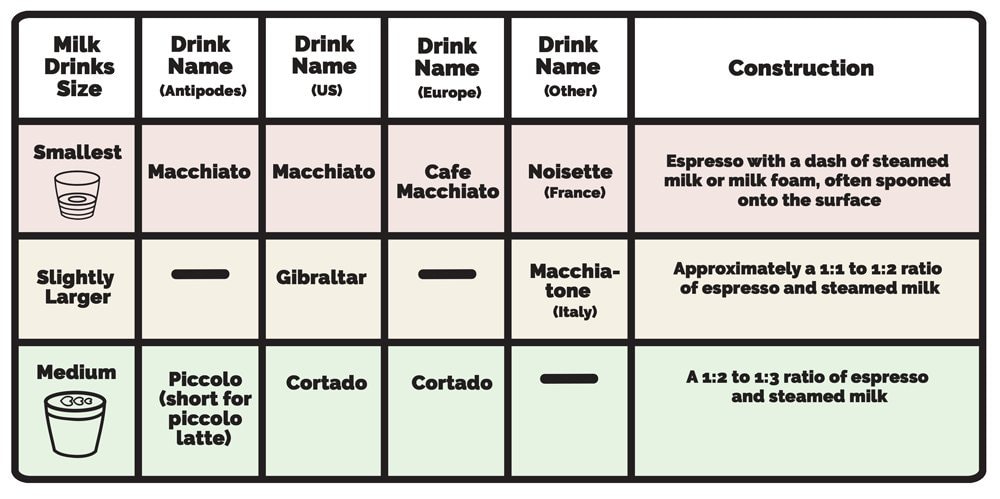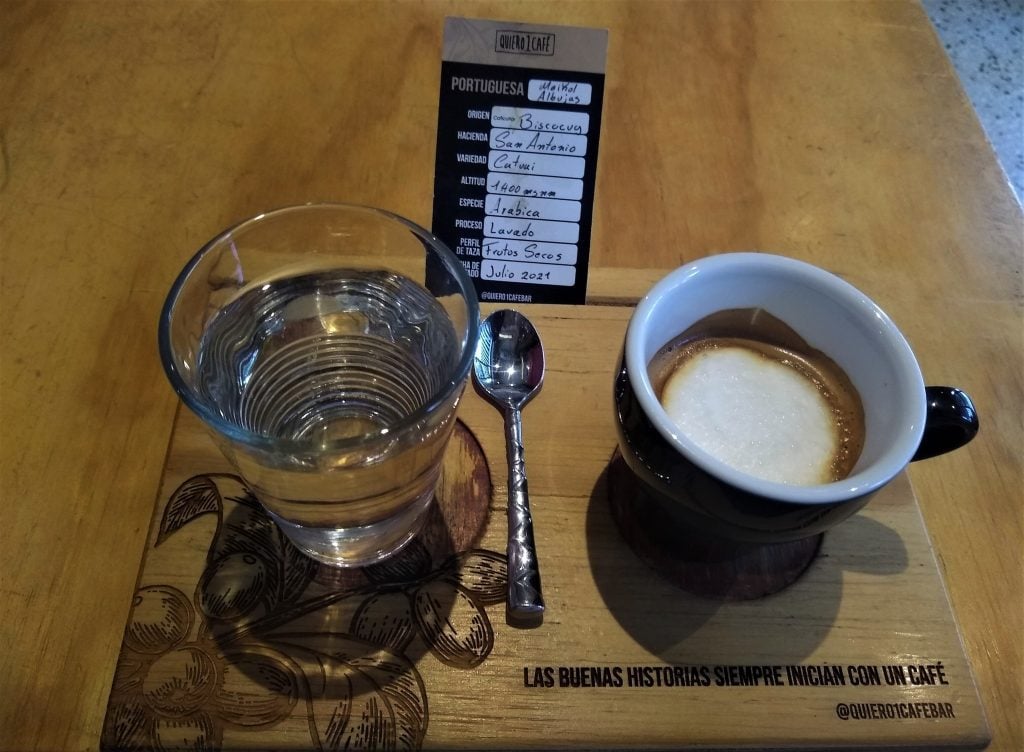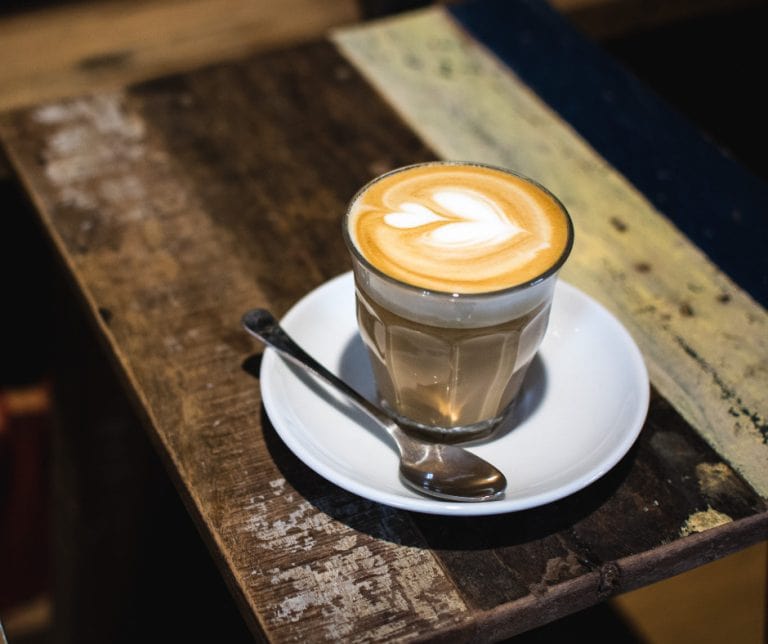The first time I drank a cortado, I wasn’t asking for it. Instead, I was asking for a marrón, the Venezuelan version of the caffé macchiato with a bit more milk.
It was my first time in Madrid, Spain and it didn’t take me too long to realize that my barista wasn’t too happy about my order.
After I explained carefully the construction of a Venezuelan marrón, she answered “so, you want a cortado, then.” Then she served me the coffee the way she knew -or wanted.
Was she rude? Perhaps. But, being honest, café menus and local preferences are challenging and can be intimidating.
For coffee lovers. For baristas. For everyone!
Although we know very little about the history of the cortado, we are certain it was first created in Spain. That’s why I asked for help from the best baristas there to explain cortado better.
Believe me, a cortado is above and beyond cutting anything ????.
So, if you want to learn a bit more about cortado coffee and some of the curiosities surrounding this Spanish classic, keep reading!
Cortado: History and traditions

Cortado is one of the most traditional Spanish coffee beverages and while café con leche can be found in any Spanish-speaking country, the cortado is most prevalent in Spain than in any other place. Cuba is, perhaps, the only country where cortado is nearly as popular as in Spain. But can’t say that for sure ????.
Cortado history is a bit lost, but the way we know it now is strongly tied to espresso machines and Moka pots. Why? Because cortado depends heavily on espresso and its sidekick, frothed milk.
At home, old-school coffee lovers use Moka pots to make their cortado, and while some use hot milk, it’s reasonable to assume that very few care about frothing milk at home.
Having a break from work is part of Spanish culture, and cortado fits nicely into this tradition. For this reason, it isn’t rare to find people at cafés asking for a cortado, particularly in the afternoon, when people tend to avoid milk.
However, café con leche is so rooted in tradition, that Spanish people tend to ask for it without even looking at the menu, according to Ricardo Iglesias, from Unfltrdcoffee in Madrid.
Ana, from Ruda Café, says that “cortado is a very common drink in Spain among people that like coffee with milk, but don’t want to drink a lot of milk. Others like it after having a meal, when they feel full but still want a bit of coffee.”

Naturally sweet, frothed milk adds a pleasant texture too, but it doesn’t always end well. According to Hola Coffee Roasters, acidity is crucial to make a proper espresso-based drink with milk.
“We don’t serve macchiatos because adding a bit of milk to our coffees, which have a balanced but noticeable acidity. So, with too little milk, coffee tastes weird, as if the milk has gotten sour,” they say.
The difference between Cortado and other drinks

Depending on the cafe and the barista, the cortado recipe may vary. For Hola Coffee Roasters, a cortado is one of their signature drinks. “We serve only three espresso-based drinks with milk: cortado, café con leche or cappuccino, and latte.” -they say.
Hola Coffee Roasters team claims that cortado “is the espresso-based drink with more coffee in it. Cappuccino, on the other hand, offers a perfectly balanced drink, with all the milk’s sweetness but you can still appreciate the coffee’s taste. Finally, we have another drink, with more milk than coffee that we call latte.”
Barista Hustle offers an eye-opening analysis of the construction of different espresso-based drinks. Yet, bear in mind that baristas and coffee shops can decide different approaches depending on the coffee beans they’re offering.

The evolution of espresso-based drinks doesn’t follow Italian coffee traditions strictly. Recent drinks like breve and flat white basically change the espresso-to-milk ratio and the size of the cup. The reason behind this might be the need to accommodate local customers’ palates, as well as their health.
For instance, Italians avoid drinking milk-based coffee drinks like caffe latte and cappuccino in the afternoon. Arguably, this tradition is based on higher lactose intolerance prevalence, according to James Hoffmann in his World Atlas of Coffee.
In Spain, as Ana explained above, they might be drinking cortado as a lighter milk-based drink in the afternoons. Similar to the way that Italians indulge in macchiatos, sometimes.
Although traditional cortado in Spain might look more like a macchiato, with a spoon of milk foam on top of an espresso. Yet, as the Hola Coffee Roasters team explains, medium roasts with higher acidity coffee beans might acquire an unpleasant sour taste with so little milk.

A cortado at Hola Coffee is a 90 ml drink. It takes a double espresso, with enough milk to reach the target serving. According to them, if someone asks for a macchiato they explain that a cortado might taste better, and everyone so far has enjoyed their cortado.
Ricardo, from Unfltrdcoffee asserts that the size of the drink tends to be a bit controversial. Some clients complain about the size of the cortado. Convention seems to dictate that cortado is espresso with a drop of milk to cut the coffee, but Ricardo explains that espresso volume has been changing over time and double espressos are becoming increasingly common.
What can I say?
I wish I had an explanation before having my first cortado!
If you liked this blog post, you may find interesting my other piece about americano or this one about the history of cappuccino.
And tell me, how has been your experience with coffee drinks and menus? Have you tried a cortado?
Print
Cortado Recipe (Home made version without espresso machine)
A cortado is a Spanish coffee drink that combines espresso and steamed milk in equal parts. This delicious beverage is easy to make at home with a few simple steps.
To make a cortado at home, I recommend using a Moka pot and a milk frother. If you have an espresso machine, check this amazing video by Lance Hedrick: How to pour latte art in cortados.
- Total Time: 13 minutes
- Yield: 1 cup 1x
Ingredients
- 75 ml of whole milk
- 75 ml of espresso or strong coffee
Instructions
- Brew your Moka pot coffee using a 10:1 ratio. That is, if your Moka pot has a chamber with a capacity for 125 ml, use 12.5 grams of coffee. You can use 12:1 ratio for a more delicate brew, but I prefer a strong coffee for cortado.
- Heat your milk to 55-60 °C and froth until getting a silky texture. Avoid frothing excessively, or you’ll get too much foam.
- Pre-heat your cup or glass. You can do that by adding a bit of hot water and discarding it, just before serving.
- Serve the coffee in your cup and then pour the frothy milk. If you want, you can try a fancy latte art. Whatever is the case, you’ll be done after adding the milk on top!
Notes
We used the Verywell Nutrition Facts calculator to obtain the nutritional facts for this recipe. The recipe values don’t include added sugars, only those naturally present in whole milk.
- Prep Time: 3 minutes
- Cook Time: 10 minutes
- Category: Coffee drinks
Nutrition
- Serving Size: 150 ml
- Calories: 46
- Sugar: 4 g
- Sodium: 32 mg
- Fat: 2.5 g
- Saturated Fat: 1.4 g
- Carbohydrates: 4 g
- Fiber: 0 g
- Protein: 2.5 g



No visit to Spain is complete without the daily (sometimes twice a day) cortado. The nicest coffee in the world.
I’d say that when visiting any country, is good to try their local coffee drinks. Cortado is so nice!